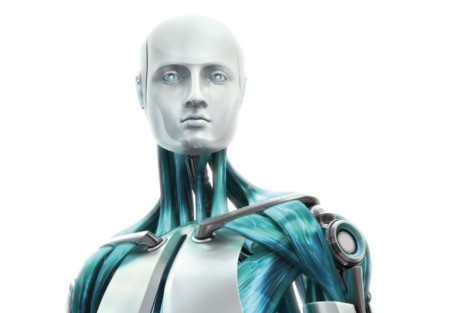This story was an exercise to play with the format of short stories. It helps to push your boundaries to play with elements creatively. This wasn’t the best story, and in fact was rejected from everywhere I submitted it, but it’s a nice one so I think it deserves a home on my site.
It’s rough and formatted weird, but I like it still.
-Frank

The First Robot President – Rough Draft
A Short Term Paper by Jonathan Simmons
For Ms. Geary’s History class
15 August 2503
[Jon, consider changing the title to something more interesting for the final paper – Ms. G]
About Tom Bellows
In 2454 Tom Bellows was the first machine-person to be elected President. He won in a landslide victory after two hundred years of machine-people being thought of as less than human. Because of his victory, machine-people came to be seen as complete equals to humans, and live and work beside humans on a daily basis.
[The previous sentence is awkward, try to shorten it]
In 2232 the first artificially intelligent machine identified itself [“himself”] as a machine-person, and began to peacefully struggle for acceptance. This machine-person was Rudy the Peaceful, an activist who used video and social media to bring attention to the struggle of robots.
[The term “robot” is useful in the title, but it can be a little offensive if overused; try a term like “android” instead]
Tom Bellows himself was an interesting figure. In 2405, he was a factory worker, building aerospace ships in Missouri. One day he heard his friend talking on the job. This friend was yelled at by their human operators; talking was distracting and could lead to accidents. After continuing to talk, Tom’s friend was damaged by a wrench in his neck. Under the law, this was not considered assault, since machines were considered property. Tom decided to commit his life to bringing robots together in peaceful unity, like Rudy the Peaceful would have wanted.
[Jon, avoid words like “damaged” when talking about machine-people, it can sound dehumanizing; also stop using the term “robot” and consider using active voice instead of passive. If you need help with that, see me after class]
During the Machine March in 2430, Tom Bellows received recognition for refusing to back away when confronted by police. He peacefully resisted their order to disperse, and the picture of him being arrested with a peaceful look on his android face would go onto [“on to”] be a symbol for the machine rights movement.
After he was released on bail, the Machine Rights Act was passed. It is argued that this act was a response to the fear of machine rebellion, but the machines seemed to be peacefully protesting. The act granted machine-people the status of “people” if they have intelligence. However, the word “intelligence” came to be a [“an”] area of dispute, so the Supreme Court took up the challenge in Welder v. State of Illinois six years later, which determined that intelligence would mean any form of independent reasoning. This meant most machines were protected under the Machine Rights Act, including appliances and vehicles with artificial intelligence.
[Acts of congress always have their years associated. In this case, “Machine Rights Act (2434)”]
Tom Bellows came to be elected into the Missouri state house, the first machine-person in that state to be elected to the legislature. After one term there, he went on to run for senate but lost. However, he received national attention for that senate run, so when he was appointed as Secretary of Machine Affairs, it was no surprise.
After the Machine Voting Act in 2450, Tom Bellows accepted an appointment as Secretary of State, the first machine-person to hold such an important position. It brought up discussions in the media of what would happen if he had to take over as president.
In 2454, he successfully ran for President under the newly formed MPP, the Mechanized Persons Party. Two things lead to his swift election: the human vote was split between the Founder’s Party and the People’s Progress Party, and the large amount of robots who could vote. He became president with 65% of the popular vote.
[Again, please don’t use the term “robot”, and some of your sentences are running a little long]
A side effect of his presidency was that the machine vote splintered between the two historically human parties and the MPP. This was because President Bellows broke away from the MPP one year into his term. This is important because he said machines deserved to have differing opinions on governance, and found himself agreeing with a lot of the FP platform.
[This is a debatable statement, and switches tenses awkwardly. Also, don’t start a sentence with “this” by itself]
In conclusion, Tom Bellows is an inspiration, and a fascinating figure in human-machine relations. President Bellows’ legacy is one of peaceful progress, and I want to grow up to bring people together like he did. Not only was he a machine rights leader, but a historical figure that was well known for being calm and peaceful. He rejected warfare as a means of keeping control, and attempted to move the country away from violence. Machine-people are all over the country, working beside humans and living their lives with us. Tom Bellows helped this world become a reality.
[This conclusion could use some work, but all in all, good job. I would say this was a solid B paper. Since this is the optional rough draft, clean it up a little and you should be set for an A when I grade it. – Ms. Geary, teaching unit #0012024]